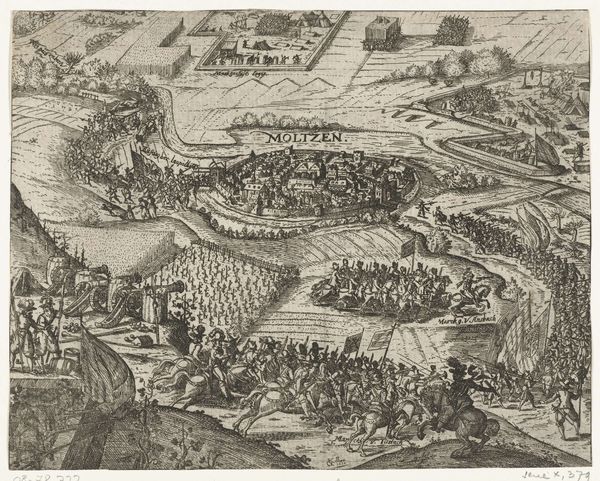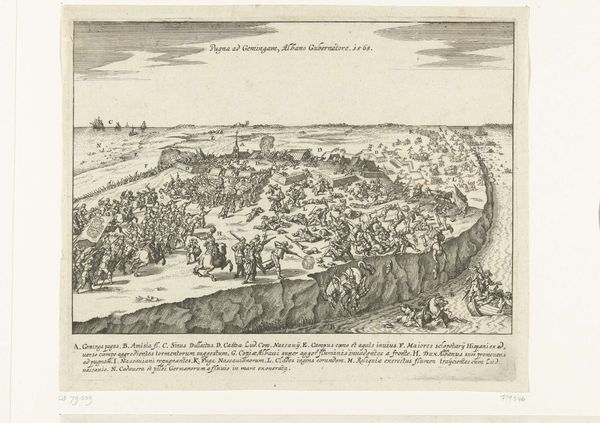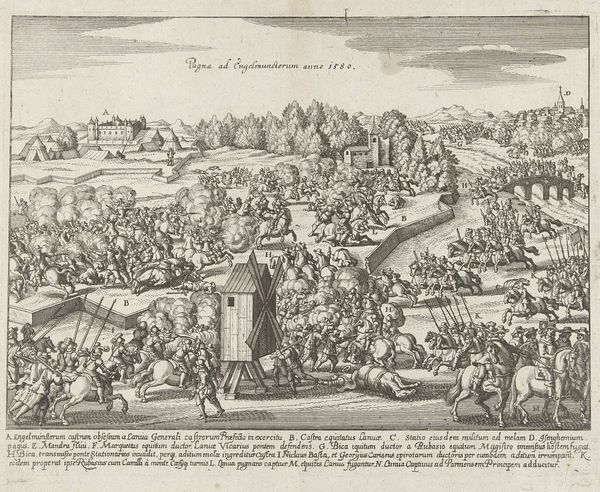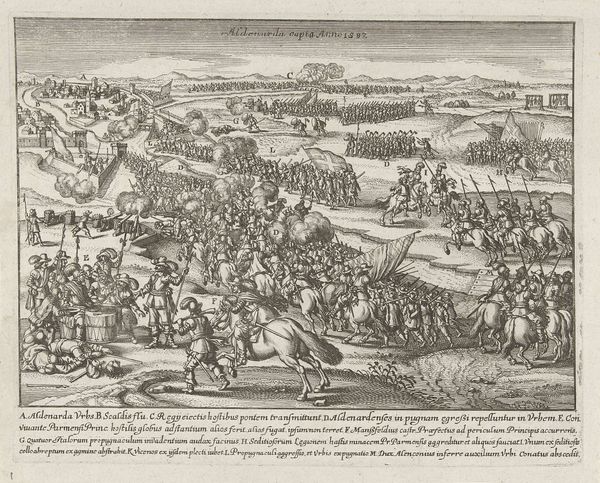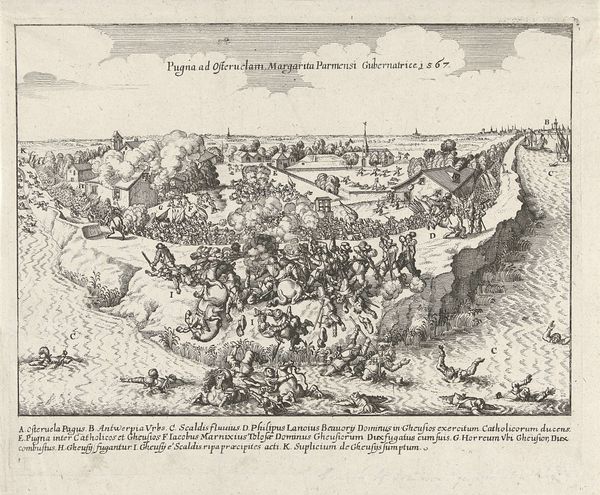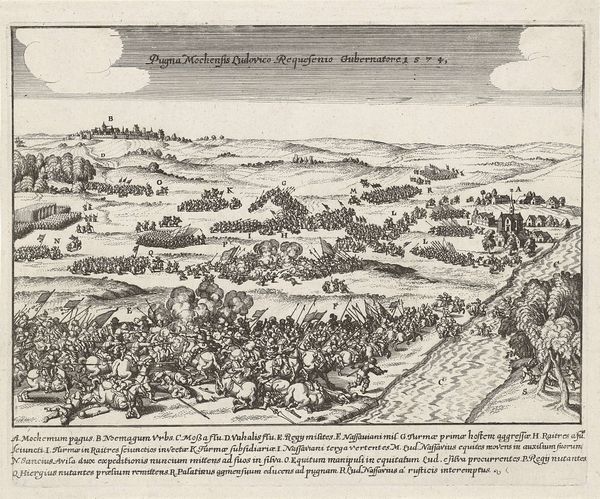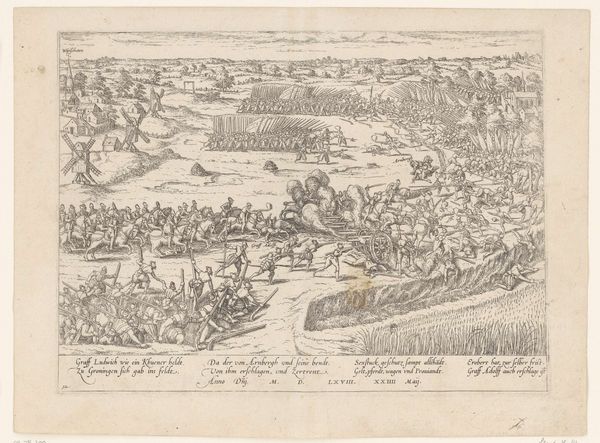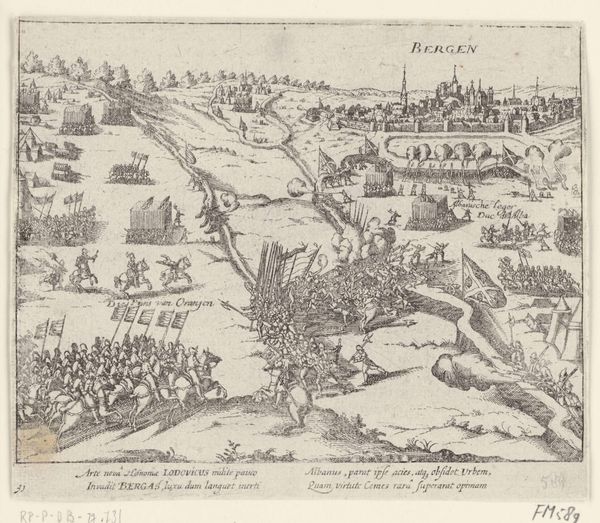
drawing, print, etching, ink, engraving
#
drawing
#
narrative-art
# print
#
pen illustration
#
etching
#
landscape
#
mannerism
#
figuration
#
ink
#
geometric
#
history-painting
#
engraving
Dimensions: height 164 mm, width 277 mm
Copyright: Rijks Museum: Open Domain
Curator: Immediately, I'm struck by the sheer density of marks—look how the lines build form and convey the feeling of mass, especially when considering its nature as print work. Editor: We are looking at “Xenophon crossing the Centrine river," an etching by Antonio Tempesta, dating sometime between 1565 and 1630. The Rijksmuseum holds this particular piece. Curator: An etching, you say? Consider the economic aspects tied to its reproduction and its potential as a tool for disseminating stories and ideologies throughout Europe during a period of extensive upheaval. Editor: Precisely! History paintings such as this, and prints especially, played a huge role in constructing historical consciousness. How did this idealized version of a Greek retreat influence contemporary military thought and even shape national identities? The tents on the side—almost too organized. This isn't just about the depicted event; it speaks to an idea of military order and control the artist, or more likely, his patron, is attempting to convey. Curator: Also, given that history paintings commonly catered to an upper middle class patronage system and promoted distinct ideologies, examining the kind of labor that factored into creating artworks such as Xenophon enables an analysis of the art world and market forces during its production. Look at the many people that he employed to help him execute a drawing in the size he wanted to. Editor: Certainly, patronage dictated the themes. The focus on classical history provided a veneer of respectability and drew parallels that flatter the patrons by associating their ambitions with ancient heroes. Curator: Agreed. While exploring those ties is crucial, equally compelling is a materials-focused consideration that will help provide an even more in-depth context. Editor: Indeed, reflecting on all these dimensions surely offers richer insights.
Comments
No comments
Be the first to comment and join the conversation on the ultimate creative platform.
